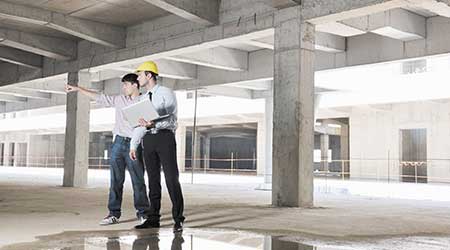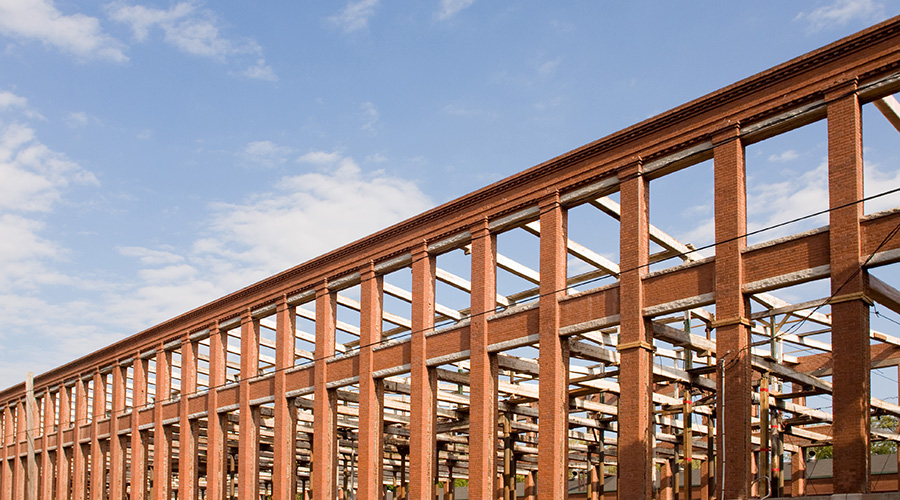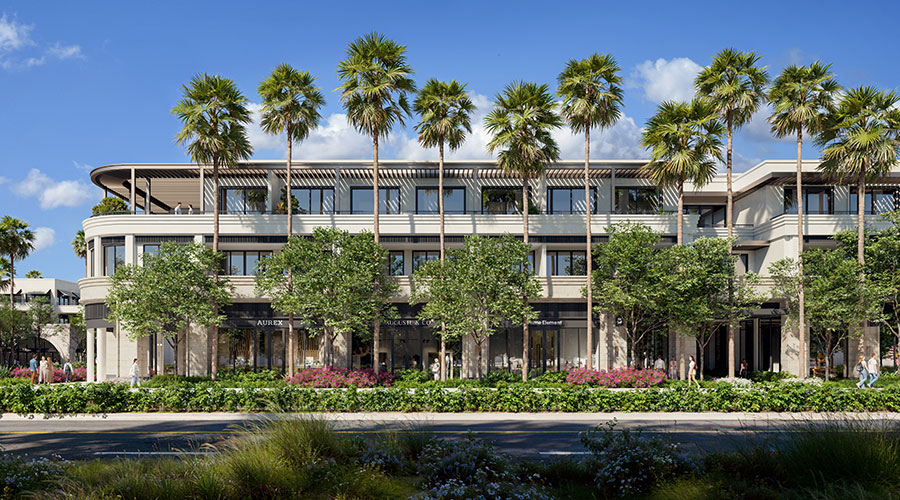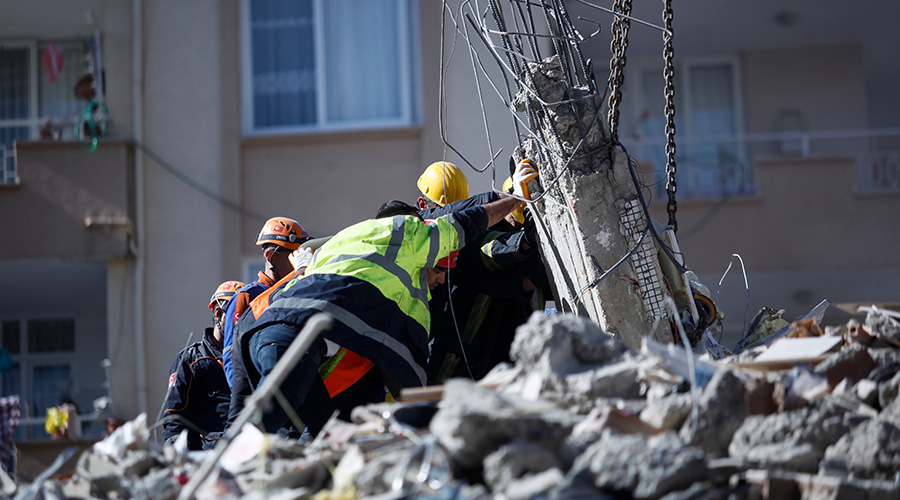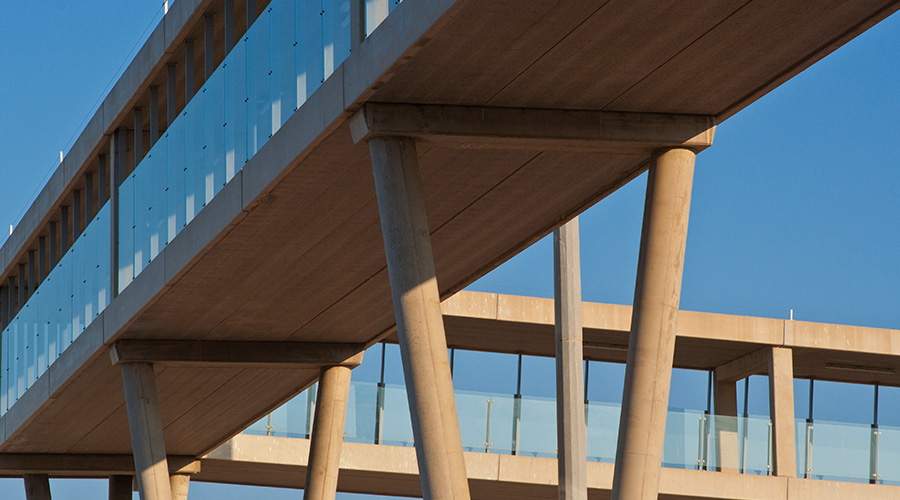10 Most Common Building Construction Phase Mistakes
From controls issues to moisture intrusion, commissioning can correct these most common construction issues.
Here are the ten most often identified construction phase commissioning issues.
1. Poor access to above-ceiling components. Poor access often yields poor maintenance of building systems. Equipment, valves, disconnect switches, and dampers often are located above ceilings in locations that are not accessible to the building operations and maintenance staff. Resolution of these issues not only encourages better maintenance of the building systems, but also reduces risk of injury to facility staff trying to reach components in difficult locations.
2. Insufficient access panels provided. System components located above hard ceilings must be accessible. Resolving instances where an access panel has not been provided, is insufficient in size, or is blocked by cabinetry or other permanent objects such as millwork or furniture is hugely important.
3. Duct insulation vapor barrier that is damaged. Often, a vapor barrier surrounding duct insulation is damaged or unsealed during installation. These openings in the vapor barrier allow warm air to condense on the cold ductwork, yielding moisture that damages duct insulation and building materials below the duct.
4. Insufficient space to allow full thickness of duct insulation. Spaces between duct components and adjacent piping, building structure, or other duct components are often insufficient for the full required depth of duct insulation. Compressed duct insulation not only contributes to poor energy performance but also can damage building materials below due to condensation caused by the reduced R value of the compressed insulation.
5. Duct insulation that is not continuous. Duct insulation that is not continuous through partitions (non-fire-rated) is a frequent issue. This allows warm air to condense on the exposed duct section within the wall. This condensation then damages adjacent drywall, insulation, and finishes while also contributing to energy loss through the uninsulated area. Situations like this are also prime candidates for mold and mildew formation because the effects of condensation are often hidden within the partition and are not noticed quickly.
6. Piping not insulated. Similar to duct insulation, piping is also often found to be uninsulated. This allows warm air to condense on cool piping, contributing to damage of adjacent materials, and causing unnecessary energy loss through the uninsulated area on both hot- and cold-water piping.
7. Mechanical controls issues. It’s fairly common, when a commissioning agent begins testing, to find that mechanical equipment does not respond to controls, does not operate in a specific mode, and has not been optimized for long-term operation.
8. Lighting controls tuning. Lighting controls issues are also very common. These include occupancy controls that do not deactivate lighting at the proper time and daylighting controls that are improperly calibrated and over-illuminate the spaces that they serve.
9. Moisture intrusion through windows. During commissioning testing of windows in the building envelope, commissioning agents often identify systemic problems in window installations. These issues allow moisture intrusion into the building that leads to material damage and conditions promoting mold and mildew formation.
10. Moisture intrusion through roof. Observations during installation and testing of completed roofs often identify improperly installed roofing materials and roof drain bodies that allow moisture intrusion through the roof that will also damage materials and promote mold and mildew formation.
Time and again, these twenty issues have appeared in projects. Avoiding or eliminating these issues reaps both financial and non-financial benefits for owners. Evan Mills of Lawrence Berkeley National Laboratories has championed multiple comprehensive research efforts of the benefits of commissioning. In his 2011 publication, Building Commissioning: A Golden Opportunity for Reducing Energy Costs and Greenhouse Gas Emissions, he reported that commissioning new construction projects yielded a median whole building energy savings of 13 percent and a median payback of 4.2 years for commissioning fees.
Additionally, Mills reported that commissioning also promotes extensive non-energy benefits such as improved indoor environmental quality, increased occupant productivity, and reduced work orders for repairs of commissioned systems. Mills also found that a comprehensive commissioning approach yields nearly twice the median level of savings when compared to a limited commissioning approach.
The commissioning process — whether it be for large, small, complex, or simple projects — has consistently proven to improve the performance of facility systems on which it is applied. Experience as well as research confirms these results and shows extensive financial benefits through the application of commissioning, making it a good investment for long-term facility owners.
Buddy Bishop, CxA+BE, is a commissioning professional and branch manager at Commissioning & Green Building Solutions. Bishop has experience in all aspects of new and existing building commissioning projects, energy audits, and building forensics investigations.
David Cantrill, PE, BEAP, CCP, is a commissioning professional and branch manager at Commissioning & Green Building Solutions. Cantrill has 10-plus years experience serving as a project manager and has commissioned more than 8 million square feet of building projects from pre-design through warranty phases.
Email comments to greg.zimmerman@tradepress.com.
Related Topics:








